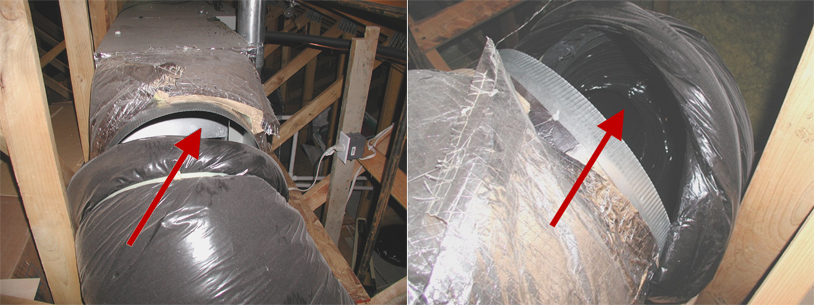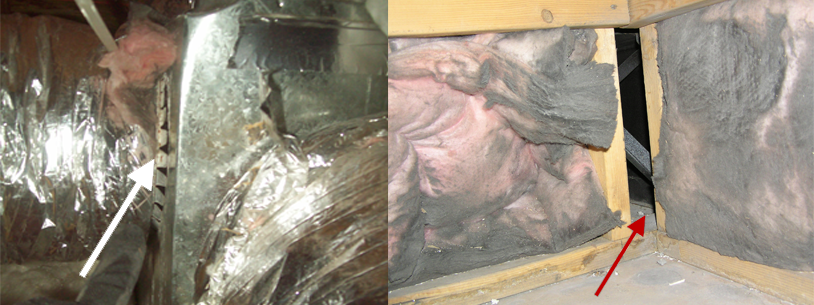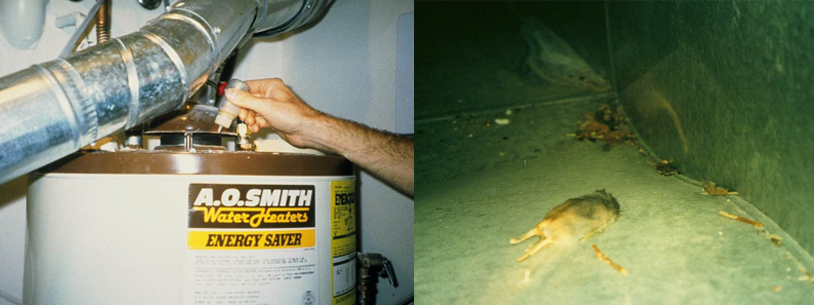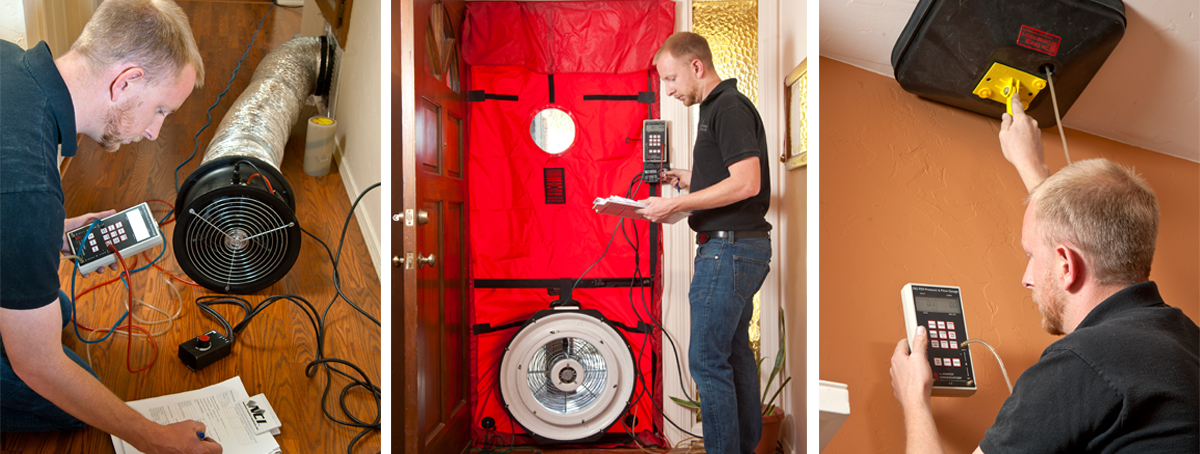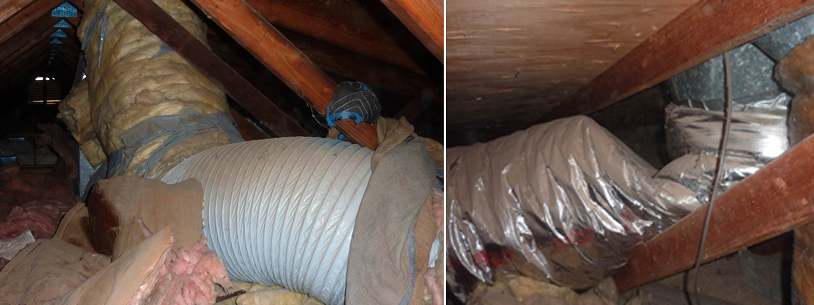Your air distribution system or ductwork carries conditioned air between the central air handler and rooms throughout the home. (The terms air distribution system, duct system and ductwork will be used interchangeably throughout this article) The duct system is as important as your heating and cooling equipment, yet it is often the most neglected part of the system. Airtight ductwork is one of the keys to a quality heating and cooling system. Conditioned air should not leak into attics and crawl spaces, nor should return ducts draw outdoor air in from these areas. Duct leaks, as this article will explain, will have an impact on comfort, energy efficiency, indoor air quality and in some extreme situations – result in serious health and safety concerns.
Compared to other energy conservation improvements, duct sealing is relatively inexpensive and can yield significant energy savings. It is critical that the air distribution system be properly sealed and pressure tested to ensure it meets national airtightness standards. We work in low income weatherization programs in Phoenix where every system we seal is pressure tested to make sure it meets national standards. Your typical duct system that is accessible can be sealed and tested for $800 to $1,400. APS and SRP are offering rebates as an incentive to get this work done. APS estimates a homeowner can save up to $200 a year by having their duct system sealed. Advantage Home Performance has the specialized equipment, HVAC license and in-house expertise to design, seal, test and modify air distribution systems.
An in-depth discussion of duct leakage, combustion safety, pressure imbalances and indoor air quality, etc. is well beyond the scope of this article. Our goal is to provide a very informative overview of duct leakage and repair for homeowners. For our readers who want more in-depth information, at the end of this article we have provided several informative links including an article we wrote on duct leakage for the Journal of Light Construction.

